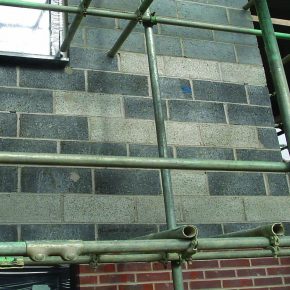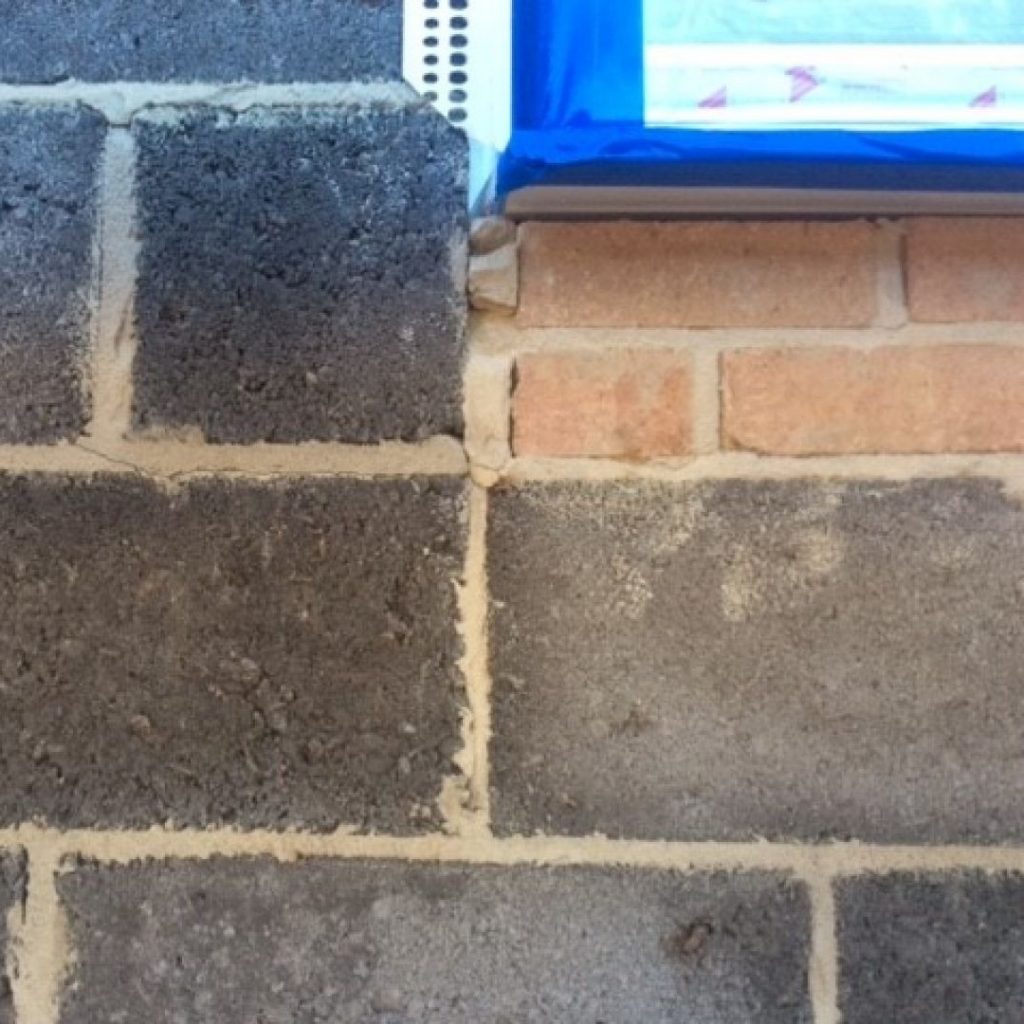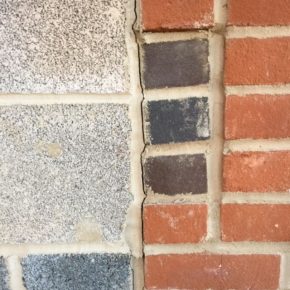
How to render onto a mix of substrate types with Saint-Gobain Weber
There are numerous unknown irregularities when rendering onto a mix of substrate types that prevent an informed judgement being made on how to carry out the work; Saint-Gobain Weber’s advice on the best action to take is below.
This issue is usually regarding the different expansion and contraction rates of various types of brick and blockwork, which causes stress and potentially even crack the render over time.
Before starting the job, it is vital to undertake a suction assessment to determine the level of absorbency within the blockwork.
If the absorbency is high, it will need to be lowered before proceeding any further. In normal circumstances, careful controlled dampening with water may suffice – more extreme cases will require an application of weberend aid.
weberend aid is designed to equalise suction and should be used when rendering onto mixed backgrounds.
Note that although weberend aid will create a suitable key once stippled and an even suction rate once dry enough, Saint-Gobain Weber cannot guarantee against cracking from the substrate due to differential movement from the different types of substrates that lie beneath the surface.
Therefore, it’s a good idea to incorporate a control joint at the point where the two materials meet. Render profile beads with a preformed seal or elastomeric coating can be used for this.

Good adhesion is the key to successfully applying render – this is dependent on how good the porosity of the substrate is.
If the suction is too high the render will not hydrate sufficiently and if it is too low, there can be issues forming a good bond.
So, all substrates should be clean, dry, sound, and free from anything that may interfere with the adhesion, such as oil, grease, and soluble salts.
Rendering onto a mix of substrates is not something Weber recommends and unfortunately it will not guarantee against cracking, but if none of the other options work then use weberend aid to help form a bond between substrate and render.

Visit the Saint-Gobain Weber website to access application tutorials and a consumption calculator to work out how much weberend aid is needed for your project.
Saint-Gobain Weber
Dickens House, Enterprise Way
Maulden Road
Flitwick
Bedford
MK45 5BY
UK
Visit Saint-Gobain Weber's website
Visit Supplier's page
Latest news

22nd November 2024
Pop Up Power Supplies Gets Arty in Yorkshire
Pop Up Power Supplies has installed 13 new electricity units at The Hepworth Wakefield – read more in this article…
Posted in Articles, Building Industry News, Building Products & Structures, Building Services, Case Studies, Civil Engineering, Facility Management & Building Services, Garden, Hard Landscaping & Walkways, Landscaping, Posts, Restoration & Refurbishment, Retrofit & Renovation
22nd November 2024
OPT Services Revolutionises Fibre Cable Capping with Eco-Friendly Innovation
UK-based OPT Services has unveiled SlimLine™ Capping, a groundbreaking fibre cable protection solution that promises to deliver significant environmental and installation advantages to the fibre optic industry.
Posted in Articles, Building Industry News, Building Products & Structures, Building Services, Facility Management & Building Services, Information Technology, Innovations & New Products, Sustainability & Energy Efficiency
22nd November 2024
CRL: The elegance of Paris balconies - a modern touch for any home
Paris balconies, with their timeless charm and practicality, are becoming something of an architectural staple in urban and rural environments, as CRL explains here…
Posted in Articles, Balustrades and Guardrails, Building Industry News, Building Products & Structures, Case Studies, Garden, Glass, Glass Projects, Restoration & Refurbishment, Retrofit & Renovation
21st November 2024
Altro distils style and performance at English Spirit
English Spirit Distillery has used an extensive package of Altro products front and back of house, in their new visitor centre café, shop and viewing area for the working distillery.
Posted in Articles, Bathrooms, Bedrooms & Washrooms, Building Industry News, Building Products & Structures, Building Systems, Case Studies, Floors, Interior Design & Construction, Interiors, Kitchens, Restoration & Refurbishment, Retrofit & Renovation, Timber Buildings and Timber Products, Walls
 Sign up:
Sign up: